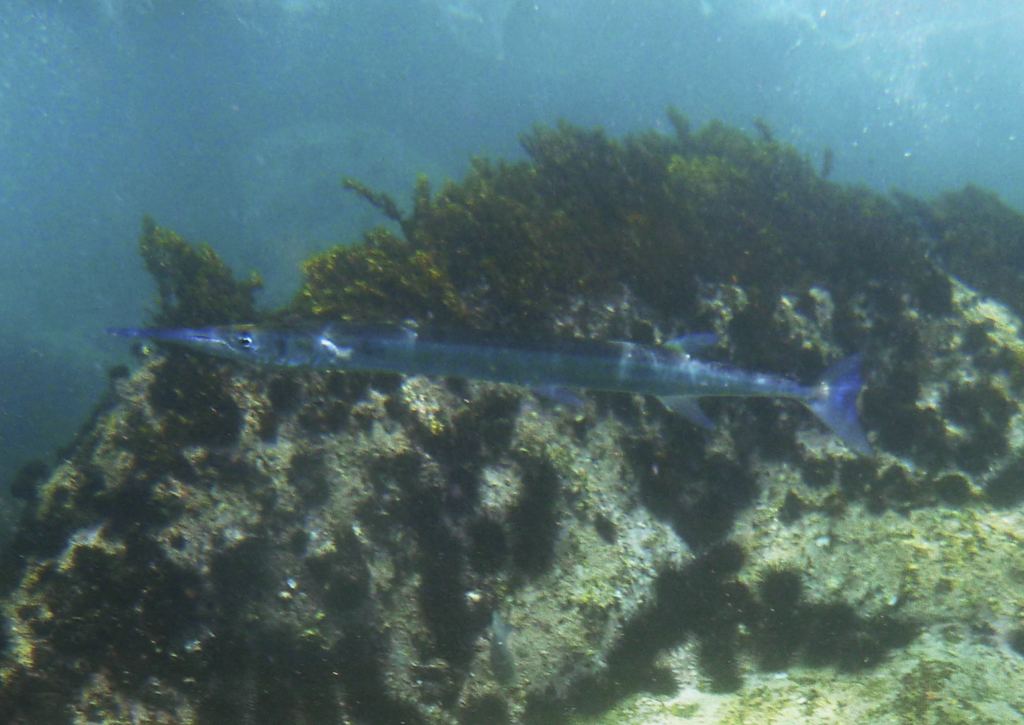Published in the Ocean Watch column, Honolulu Star-Advertiser © Susan Scott
July 2, 2012

Needlefish skull.
ISLAS TRES MARIETAS, Mexico » As our sailboat, Honu, motored along in glassy flat water, a sparkling, 2- to 3-foot-long needlefish astonished me by getting up on its tail and “walking” on water.
I have often seen flying fish pop from the surface and fly for long distances. So too have I watched needlefish leap, glide and fall. Never, though, had I seen needlefish get vertical and run a 50-yard-dash.
Needlefish are common throughout the world’s tropical waters. Most swim in small schools near shore, but some are solitary, offshore fish. The largest species grows to more than 4 feet, but most are in the 2- to 3-foot range. Australians call needlefish “longtoms.”
Four species, all similar in appearance, inhabit Hawaii’s reefs, and at least seven live here off Mexico’s Pacific Coast. Needlefish species look so much alike and so often swim together that one fish book I have on the boat lumps them together with one photo and one description.
All needlefish have narrow, tubular bodies and rigid, pointed jaws that make up about a quarter of the fish’s length.

I once found skeletons of needlefish in a Mexican fish camp. The jaws’ beak tips were broken off, but most of the teeth were intact, feeling dangerously sharp to the touch. A needlefish grasps fish with these spiky teeth, striking with a sideways movement of the head, and swallowing the prey whole.
It’s easy to miss seeing needlefish while snorkeling or diving, because the fish hover near the surface and are often skittish.
The abundant needlefish here at Tres Marietas, a national marine preserve, were so accustomed to seeing snorkelers that the one pictured below practically posed for me.
Needlefish have a bad reputation for spearing anglers, but those are rare accidents. Lights at night sometimes startle these fish, causing them to jump at speed. In their panic, needlefish have impaled canoe hulls as well as people.
Like their distant relatives the flying fish, needlefish can leap from the water at up to 38 mph. Because they don’t have the winglike pectoral fins nor the asymmetrical tail of flying fish, they don’t glide as far as malolo. To keep going on the surface, the needlefish must dip its powerful tail into the water and scull like crazy.
My racing fish remained upright for so long, sculling its tail with splashes, that I had time to point it out to Craig. Together we shared the thrill of watching a fish run the surface of a mirrored sea.
I imagine some big predator below turned that fish into an Olympic class sprinter. I hope it got away.
©2012 Susan Scott